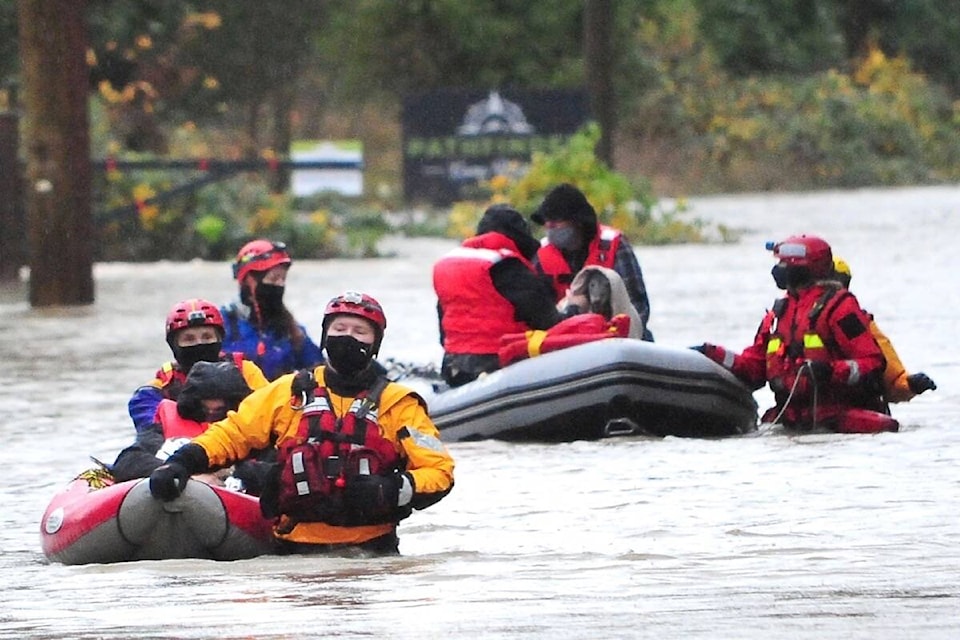How do you safely evacuate an entire neighbourhood or whole town when a disaster is just moments away?
That’s the question that plagued B.C. in 2021 as communities were hit with one natural disaster after another. Now, 14 First Nations and local governments will get provincial funding to develop emergency evacuation route plans, better preparing these communities for emergencies.
“As we’ve seen with the past year’s heat dome, wildfires, flooding and mudslides, preparing for emergencies is critical,” said Mike Farnworth, Minister of Public Safety and Solicitor General in a press release sent out March 20. “This funding will go a long way to support First Nations and local governments to help ensure people’s safety during emergencies or disasters.”
The funding is meant to support communities to either update or create new evacuation route plans for residents who do not have an established route in the event of a large-scale emergency. Of the 14 communities receiving this latest support from the Community Emergency Preparedness Fund, nearly half are First Nations communities.
“Given the increased frequency, intensity and duration of disasters caused by climate change, it’s clear that we need to support essential work that communities are doing, like planning evacuation routes,” said Jennifer Rice, Parliamentary Secretary for Emergency Preparedness. “Since 2017, we’ve seen great success with this program as it supports both First Nations and local governments in realizing their emergency preparedness goals.”
The communities receiving funding are:
Alberni-Clayoquot Regional District, Huu-ay-aht First Nation, Uchucklesaht Tribe, Toquaht Nation – Regional: West Coast Region Evacuation Route Plan: $64,040
Armstrong, Spallumcheen – Regional: Evacuation Plan: $45,312.50
Capital Regional District – Evacuation Route Planning: $25,000
Gibsons – Gibsons Bluff Evacuation Plan: $25,000
Maple Ridge – Evacuation Route Planning: $25,000
Regional District of Nanaimo – Electoral Area F & H Evacuation Route Plan: $24,645
Regional District of North Okanagan – Lumby-Mable Lake/Shuswap River Drive Evacuation Route Plan: $25,000
Nuchatlaht First Nation, Zeballos – Regional: Evacuation Route Planning: $42,000
Pauquachin First Nation, Tsartlip First Nation, Tseycum First Nation, Tsawout First Nation – Regional: W’SANEC Evacuation Route Planning: $83,850
Sechelt – Tuwanek Evacuation Plan: $25,000
Skuppah Indian Band – Evacuation Route Plan: $25,000
Sun Peaks – Evacuation Plan Update: $25,000
Sunshine Coast Regional District – Egmont Evacuation Plan: $25,000
Tk’emlups te Secwepemc – Evacuation Route Plan: $25,000
Evacuation route planning funding is part of the $189-million Community Emergency Preparedness Fund, administered through the Union of BC Municipalities (UBCM). This fund supports a suite of programs to strengthen the resilience of First Nations communities, local governments and residents.
“The Alberni-Clayoquot Regional District, along with project partners the Huu-ay-aht First Nations, Toquaht Nation and the Uchucklesaht Tribe, are pleased to be awarded this grant,” said Heather Zenner, protective services manager, Alberni-Clayoquot Regional District. “This grant provides the opportunity for the project partners to collectively develop an evacuation route plan for the west coast of our region. The regional nature of this opportunity allows emergency planning to be done over several jurisdictional boundaries, allowing for all citizens to be incorporated and evacuation planning to consider many remote communities and neighbourhoods on the west coast.”
Budget 2022 provides $2.1 billion to support the recovery of communities to “build back better” from recent disasters and to strengthen defences to make sure people and communities throughout B.C. are protected from future disasters. From this funding, an investment of $110 million is for the Community Emergency Preparedness Fund to support local governments and First Nations with their community-led disaster risk reduction initiatives.
Since 2017, communities throughout B.C. have been able to apply for funding through this program for local priority projects that are designed to help mitigate and prepare for disasters and climate-related emergencies.
READ MORE: Indigenous-led action plan focused on flood management for entire Lower Mainland
@CHWKcommunity
jessica.peters@abbynews.com
Like us on Facebook and follow us on Twitter.
Want to support local journalism during the pandemic? Make a donation here.
